I've just bought a PAM8403 pre-built circuit board for $1 on eBay. I was going to use it to drive a set of headphones but I neglected to consider that this is a class D amplifier and will not take kindly to connecting the -ve output terminals together (since headphones are typically 3-wire, unless you have a set of very expensive balanced headphones.)
Is there a cheap solution to connecting the two -ve terminals to drive a pair of headphones without rewiring the headphones themselves? In particular is there any arrangement of inductors and capacitors that will allow the negatives to be commoned?
I am aware that I can use two 1:1 audio isolation transformers but the cheapest I can find these are about $5 each which is not ideal.
I have a feeling that it is possible to connect the two negatives together with some sort of LC filter but I'm thinking that it will probably greatly reduce the usable power output of the PAM8403 chip amp which is already quite low. I would like to hear anyone else's thoughts/ideas.


